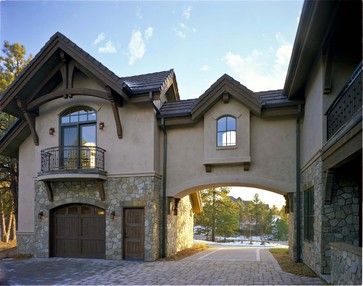 You’ll probably find a video in the coming weeks with respect to heat pumps in our climate, I’ve just installed one. One can assume that probably means that they do work in our climate, otherwise I wouldn’t have installed one. The real answer is, pretty much. With that said, read on for details.
You’ll probably find a video in the coming weeks with respect to heat pumps in our climate, I’ve just installed one. One can assume that probably means that they do work in our climate, otherwise I wouldn’t have installed one. The real answer is, pretty much. With that said, read on for details.
The first thing to understand about heat pumps is how they work. In a traditional sense, heat is created by burning fuel (in the case of Teton Valley, propane, whereas natural gas is not available) or with the use of an electric heating element much the heating element in your oven, or the elements that glow bright red in your toaster. Heat pumps work much differently. Essentially, they absorb heat from the outside and transfer that heat inside your home through refrigerant. Refrigerant has all sorts of weird properties that allow it to boil and change from a liquid to a vapor at temperatures far different than something like water.
Not all heat pumps are created equal, there are different types. The most common types are air source and ground or water source heat pumps.
Ground source heat pumps are more traditionally referred to as geothermal systems. There are different types of geothermal systems. The most common types are open-loop and closed-loop, we see closed loop systems more frequently in our area, but I have seen both. With a closed loop system, liquid is pumped through tubes in the ground which is naturally warm, even throughout the winter months. The heat that is absorbed is then extracted from the liquid as it returns to the heat pump, and the cold water is then pumped back into the ground to be reheated naturally. In the case of an open loop system, groundwater is used usually from a domestic well, the heat is extracted, and the water is then allowed to drain or in some cases is injected back into the ground.
Air source heat pumps are more traditionally referred to as condensers and evaporators, a good example is an air conditioning system. An air conditioner works by absorbing heat inside the home, then transferring it outside. In the winter the cycle reverses, and the heat is absorbed from the outside air and transferred inside. Believe it or not, there’s enough heat in the outdoor air even at very low temperatures. Obviously a major benefit of an air source system is that it can be reversed, and the home is then air-conditioned during the cooling months. The downside is that these systems begin to lose efficiency at about 0 degrees Fahrenheit, but can operate efficiently in Sub-Zero temperatures to a point. This is why at the preface of my article I said “pretty much.”
With respect to the air source systems, it never gets below 0 degrees in Teton Valley, so there’s nothing to worry about. Right? Sarcasm aside, there are solutions. The easiest solution is obviously a backup heat source that can be activated when the temperatures get too low for the system to operate efficiently. The other solution is to add an auxiliary form of heat to the system which can either be in electric coil that is activated at very low temperatures, or a gas furnace that activates at low temperatures. The latter is referred to a “dual fuel” system.
There are other types of air source heat pumps which are commonly referred to as “mini splits.” Mini splits are basically an air source heat pump, but rather than having the system tied to a traditional furnace, they usually have a smaller self contained blower connected to an outside condenser via refrigerant lines. Mini splits are very common in most parts of the world because of their efficient cooling and heating capabilities and the fact that they can easily be retrofitted to any residence or building with relative ease. The downside is that most mini split indoor units (often called heads) don’t have any way to add auxiliary forms of heat such as heating elements or gas-burning forms of backup heat. Regardless, I do anticipate seeing more of these types of installations with backup heat such as baseboard electric which can be used seldomly when the temperatures dip into the sub double digits.
As for my system, it’s ducted and ductless mini split system with backup heat strips and temperature lockouts, all of which is controlled from my smartphone. I’d be happy to fill you in, it’s pretty cool stuff.
 We don’t see a ton of stucco in this area, but have seen it installed in years past. It is also becoming a popular accent material. Also, it is a durable material that rarely needs refinished.
We don’t see a ton of stucco in this area, but have seen it installed in years past. It is also becoming a popular accent material. Also, it is a durable material that rarely needs refinished. Homeowners association (HOA) violations have been a Hot Topic lately. Whether it’s the HOA acting outside of their authority based on interpretation of the development bylaws or restrictions, or imposing unreasonable fines for violations.
Homeowners association (HOA) violations have been a Hot Topic lately. Whether it’s the HOA acting outside of their authority based on interpretation of the development bylaws or restrictions, or imposing unreasonable fines for violations.